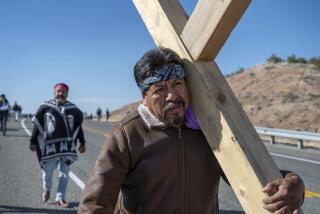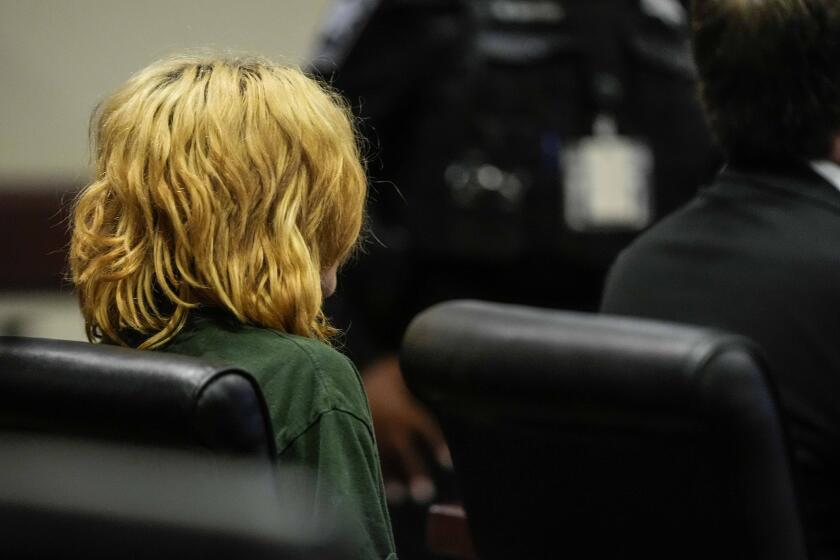‘Suitcase Nukes’ Pack Little Risk
In 1997, then-Russian Gen. Alexander I. Lebed stunned the world when he alleged that almost 100 miniature, portable nuclear devices from the former Soviet Union could not be accounted for. Russian officials denied such weapons existed, but the suspicions persisted.
Weapons of mass destruction are the most feared tool of terrorists.
Among them, portable nuclear devices, commonly referred to as “suitcase nukes,” are particularly dangerous because of their small size and full-scale nuclear-explosion effects.
In the aftermath of the Sept. 11 attacks, another look at the threat posed by suitcase nukes is particularly urgent.
The Center for Nonproliferation Studies at the Monterey Institute of International Studies undertook such a study. It used its database (available to the public through the Nuclear Threat Initiative at www.nti.org), carried out additional information searches and conducted interviews. The results represent perhaps the first encouraging news in this area in the last year.
Official denials notwithstanding, there is good reason to believe that the Soviet Union possessed so-called small atomic demolition munitions, just as the U.S. did during the Cold War.
These devices reportedly weighed 60 to 180 pounds and had yields of 100 to 1,000 tons of TNT.
In our view, the discrepancies the Russians reported about devices transferred from other former Soviet republics more likely reflected poor accounting rather than the loss of weapons.
A special commission on suitcase nukes reported in 1996 that it found all such weapons that had been in Russia before 1991, when the Soviet Union collapsed, but not those that had been in other former Soviet republics.
Most withdrawals of such weapons to Russia were, in fact, completed in 1989 and 1990, many months before the collapse of the Soviet Union, when the troops charged with control of nuclear weapons were still reliable.
The priority attached to safe withdrawal was demonstrated by a shooting incident in Azerbaijan in 1990, when a demonstration organized by the local opposition tried to prevent the takeoff of aircraft carrying nuclear weapons. The crowd dispersed after warning shots, but an officer involved said that troops had been authorized to use deadly force if necessary to prevent the seizure of nuclear weapons.
The withdrawal of nuclear weapons from Belarus and Kazakhstan in 1992 proceeded smoothly.
The governments of these states did not challenge the control of nuclear weapons by the Russian Defense Ministry.
It was the nuclear weapons in Ukraine that generated considerable concerns.
But because of these concerns, accounting and on-site verification were conducted independently by the Russians and the Ukrainians in 1992, with close monitoring by the United States. So far, there has been no credible information about the loss of even a single nuclear weapon.
Within Russia itself, the safety of portable nuclear devices is subject to the same risks as that of all other nuclear weapons. These risks are addressed by the U.S. through the Nunn-Lugar cooperative threat reduction program.
Finally, even if a small number of portable nuclear devices were lost (improbable, but vital to assess nevertheless), they probably are not operational today.
These devices apparently had a short shelf life and had to be serviced frequently. Consequently, since the early 1990s they would have missed 20 or more scheduled servicings and can hardly be efficient weapons in terrorists’ hands.
Our findings suggest that resources for interception of “suitcase nukes” could be more productively used against other, more likely threats, such as “dirty” bombs, in which conventional explosives are used to disperse highly radioactive materials.
Of course, it would be only prudent to keep a close eye on further developments with regard to portable nuclear devices.
We intend to continue to do just that.
More to Read
Sign up for Essential California
The most important California stories and recommendations in your inbox every morning.
You may occasionally receive promotional content from the Los Angeles Times.








